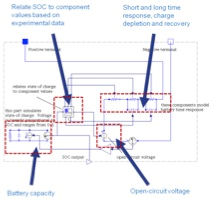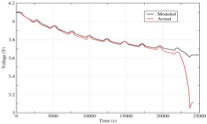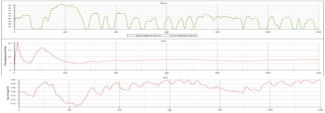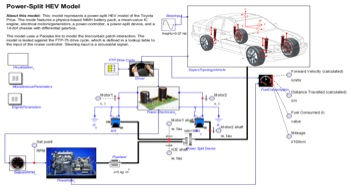Latest News
July 2, 2012
By Paul Goossens
The field of energy storage is extremely active, with a constant stream of innovations being deployed to address major design challenges. At the heart of this activity is the commercial drive to increase energy density (energy stored per unit mass), extend battery life and improve overall charge/discharge efficiencies to reduce unit costs and enhance product reliability. But while great progress has been made in the last decade, certain industries still have a long way to go.
In particular, the electric vehicle industry is faced with major economic pressures to increase energy densities—and reduce costs—because at present, the cost-benefit arguments for the consumer to move from a conventional internal-combustion-engine-only vehicle to an electric or hybrid electric vehicle are marginal. According to several studies, the electric vehicle has not lived up to its promise economically because the cost-benefit model is extremely sensitive to two factors: the cost of energy storage and the cost of fossil fuel.
Since 9/11, the cost of crude oil has steadily increased from around $20/barrel in 2001 to looking like it would break the $100/barrel point in 2011, thus driving more investment into alternatives such as electric vehicles. However, the last year has actually seen a sharp decline in oil prices (with a brief spike during the Libyan uprising), demonstrating that relying on the oil price to drive this particular business model is untenable.
As Henry Lee, faculty co-chair of Energy Technology Innovation Policy research, Harvard Kennedy School, puts it: “The industry will need improvements in battery technology and reductions in battery costs for electric vehicles to meet their potential. Such improvements will require continued government support of battery research and development, and higher gasoline prices either through government action in the form of taxes or a cap-and-trade program or through the market.”
Therefore, the race is on to produce better, lower-cost energy storage products (for the sake of brevity in the rest of this article, I’ll call them “batteries”—but there are other forms of energy storage, such as hydrogen fuel cells and supercapacitors), as well as improvements in the circuitry and electromechanical components that generate power to charge them and draw power to drive the electric vehicle.
Back to Basics
One major characteristic of this research is the need to get back to fundamental physical concepts when designing new batteries. To facilitate this, the industry is turning increasingly to math-based modeling techniques that allow engineers to accurately describe the behavior of the system—and the constraints on the system—in physical terms. These model equations are then used to develop, test and refine designs quickly, without building physical prototypes. Hence, having a good virtual model of the battery is essential so that both battery behavior and the physical interaction of the battery with all the other components are properly reflected in the model.
 |
| A circuit-based battery model. |
Conversely, having a high-fidelity dynamic model of the rest of the vehicle that reflects the loading conditions that are applied to the battery during many different drive cycles and environmental conditions provides considerable insight into the two-way demands placed on both the battery and the rest of the vehicle. Because the battery plays such a vital role in the vehicle, capturing these interactions is essential to designing an efficient, effective electric vehicle.
In a recent case study, a research team at the University of Waterloo, Ontario, headed by Dr. John McPhee, the NSERC/Toyota/Maplesoft Industrial Research Chair for Mathematics-based Modeling and Design, developed high-fidelity models of hybrid-electric and electric vehicles, including the batteries as an aid to accelerating the design process. The team chose MapleSim, the multi-domain physical modeling and simulation software from Maplesoft, because they have found the symbolic approach in MapleSim to be an effective way to develop simulation models of sufficient fidelity without sacrificing real-time performance for hardware-in-the-loop (HIL) testing—a critical part of the design and development process.
To illustrate the process, I’ll focus on two of their projects: a battery electric vehicle (BEV) model and a hybrid electric vehicle (HEV) model.
BEV Model
Lithium-ion (and other lithium-chemistry) batteries are becoming popular for electric vehicles, as they are light and provide more power than other common types of batteries of the same size and weight. Batteries in vehicles are subject to periods of high current draw and recharge and large temperature variations, all of which can have a significant effect on the performance and lifespan of the batteries.
 |
| This example discharge model shows recovery charge when the load is disconnected. This matches experimental results very closely. Test data courtesy A&D Technologies, Michigan. |
To capture these effects, McPhee’s team needed a model of lithium-ion battery chemistry over a wide state-of-charge range, widely varying currents and various temperatures. Starting with the electric circuit battery model of Chen and Rincón-Mora, they implemented the components in MapleSim, using a custom function component to represent the non-linear relationship between the state of charge and the electrical components. They modified the battery equations to simulate a battery pack that is composed of series and parallel combinations of single cells.
Next, they developed a power controller model to connect the battery pack to a motor. They then incorporated a one-dimensional vehicle model into the model. The simple vehicle model drives on an inclined plane, which is in turn controlled by a terrain model. A drive cycle model was included to control the desired speed of the vehicle. The resulting differential equations, generated by MapleSim, were simplified symbolically and then simulated numerically.
A variety of driving conditions were simulated, such as hard and gentle acceleration and driving up and down hills. The results were physically consistent, and clearly demonstrated the tight coupling between the battery and the movement of the vehicle. This model will form the basis for a more comprehensive vehicle model, which will include a more sophisticated power controller and more complex motor, terrain and drive-cycle models.
HEV Model
The team also used MapleSim to develop a multi-domain model of a series HEV, including an automatically generated optimized set of governing equations. The HEV model consists of a mean-value internal combustion engine (ICE), DC motors driven by a chemistry-based nickel-metal hydride (NiMH) battery pack, and a multi-body vehicle model.
 |
Results from full-vehicle HEV test using an urban drive cycle. The battery state-of-charge and fuel consumption are shown. |
They chose a NiMH battery because of its widespread use in hybrid-electric vehicles. They used a chemistry-based modeling approach that captures the chemical and electrochemical processes inside the battery. With this modeling approach, they could modify the physical parameters of the battery as needed to meet their overall design requirements for the vehicle. They modeled the battery inside MapleSim by placing the governing equations of the battery processes directly inside MapleSim custom components.
MapleSim automatically generated an optimized set of governing equations for the entire HEV system, which combined mechanical, electrical, chemical and hydraulic domains. Simulations were then used to demonstrate the performance of the developed HEV system. Simulation results showed that the model is viable and the number of governing equations was significantly reduced, resulting in a computationally efficient system.
This HEV model can be used for design, control and prediction of vehicle handling performance under different driving scenarios. The model can also be used for sensitivity analysis, model reduction, and real-time applications such as HIL simulations.
So far, this approach has paid significant dividends for both projects.
“With the use of MapleSim, the development time of these models is significantly reduced, and the system representations are much closer to the physics of the actual systems,” says McPhee. “We firmly believe that a math-based approach is the best—and quite possibly, the only feasible approach for tackling the design problems associated with complex systems such as electric and hybrid-electric vehicles.”
Future Work: Power Electronics
As mentioned, developing a high-fidelity battery model is only part of the process. To model the loads being applied to the battery, it is connected to a range of electromechanical system models such as the internal combustion (IC) engine (in the case of a hybrid), power generation and motors. It’s also connected to all the power electronic circuitry.
 |
| The system equations for this multi-domain HEV model are generated automatically by MapleSim, and are accessible to the researchers for analysis and improvements to the design. |
The next step in these projects is to consider the effects of the power electronics on the battery. Currently, these are simulated using “mean value” models, but work has begun on incorporating the three-phase switched networks in detail to investigate these effects.
MapleSim already has many built-in components, such as bipolar junction transistors (BJTs), diodes, metal-oxide-semiconductor field-effect transistor (MOSFET) and CMOS. In addition, there is a growing collection of power electronics sub-systems that have been submitted by research groups like McPhee’s, such as pulse-width modulation (PWM) controllers, insulated gate bipolar transistor (IGBT) inverters and power amplifiers, to the Maplesoft Application Center.
Battery manufacturers in the automotive sector aren’t the only ones dealing with the challenges from economic, environmental and governmental pressures. Manufacturers in the renewable energy sector and consumer electronics are facing the same challenges of delivering products that are economically attractive while fulfilling the environmental and legal demands placed on them.
Complex mathematical models of the products are becoming increasingly important—and increasingly complex. Fortunately, there are groups of researchers already engaged in modeling batteries at a detailed level, and these models are beginning to become available to help other engineers in their design work.
Paul Goossens is vice president, applications engineering for Maplesoft. Send e-mail about this article to [email protected].
MORE INFO
Subscribe to our FREE magazine, FREE email newsletters or both!
Latest News
About the Author
DE’s editors contribute news and new product announcements to Digital Engineering.
Press releases may be sent to them via [email protected].






